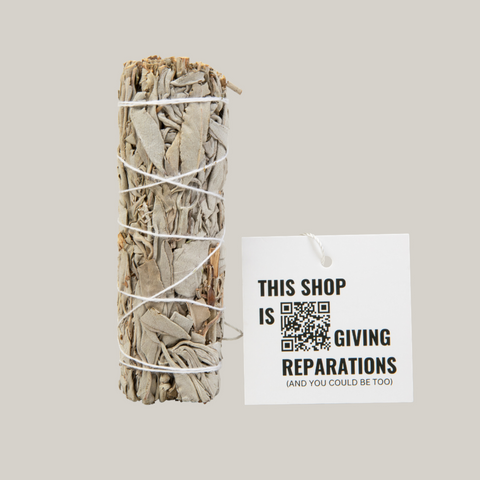



Ts'ah (Sage) Bundle
Ts’ah (pronounced “s-ah”) is the Diné word for Sage, a plant stewarded on their ancestral lands in what is now the Southwest United States.
This sacred medicine is traditionally used for cleansing, protection, and restoring harmony. Its scent—earthy, herbaceous, and sharp—is known to clear stagnant or negative energy, ground the spirit, and invite a sense of peace.
In Diné tradition, Ts’ah is more than a plant. She is a protector and purifier, a vital part of hózhǫ́—the sacred philosophy of balance, beauty, and right relationship that guides life. When burned in ceremony, her smoke carries prayers, creating a pathway for the spirit to reconnect with sacred order.
These healing qualities are also reflected in the plant’s physical properties. Compounds found in sage, such as cineole and thujone, have been shown to offer antimicrobial and antioxidant benefits. These properties support respiratory health, mental clarity, and emotional grounding—offering protection and restoration in every breath of her smoke.
BUNDLE SPECS
-
Approximately 4 inches in length
-
Hand-harvested on private farmland in Southeast San Diego
-
Wrapped with natural unbleached cotton string
-
Packaged with a tag noting your contribution to reparative justice
- Currently sourced from Magic Brands
